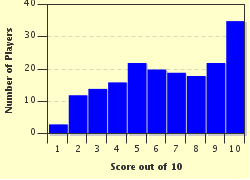Quiz Answer Key and Fun Facts
1. First, let's explore addition a bit more.
5+2 = 2+5 = 7
So, the order of the numbers doesn't matter with addition. What is this property called?
2. Subtraction is another basic operation. Using five and two, you can get 3 or -3, depending on which number goes first. In 5−2 = 3, what is the 5 called?
3. Multiplication of five and two yields ten. What relation are five and two to ten?
4. Division is the opposite of multiplication: order matters, so using the numbers five and two we can make either 2.5 or 0.4 with division. Which of these signs CANNOT be used for division?
5. Using this operation, we can get the numbers 25 or 32 from five and two. What is it?
6. If five is the radicand and two is the degree, we can get a number roughly equal to 2.236. We can say 2.236 is the ___ of five.
7. The logarithm of 5 to base 2 is (roughly) 2.322. What does this mean?
8. 5 mod 2 is what?
9. Tetration is our next process. 5^^2 means 5 to the power of itself. What is 5^^2?
10. How is the decimal number 5 written in base 2 (binary)?
Source: Author
AdamM7
This quiz was reviewed by FunTrivia editor
rossian before going online.
Any errors found in FunTrivia content are routinely corrected through our feedback system.


